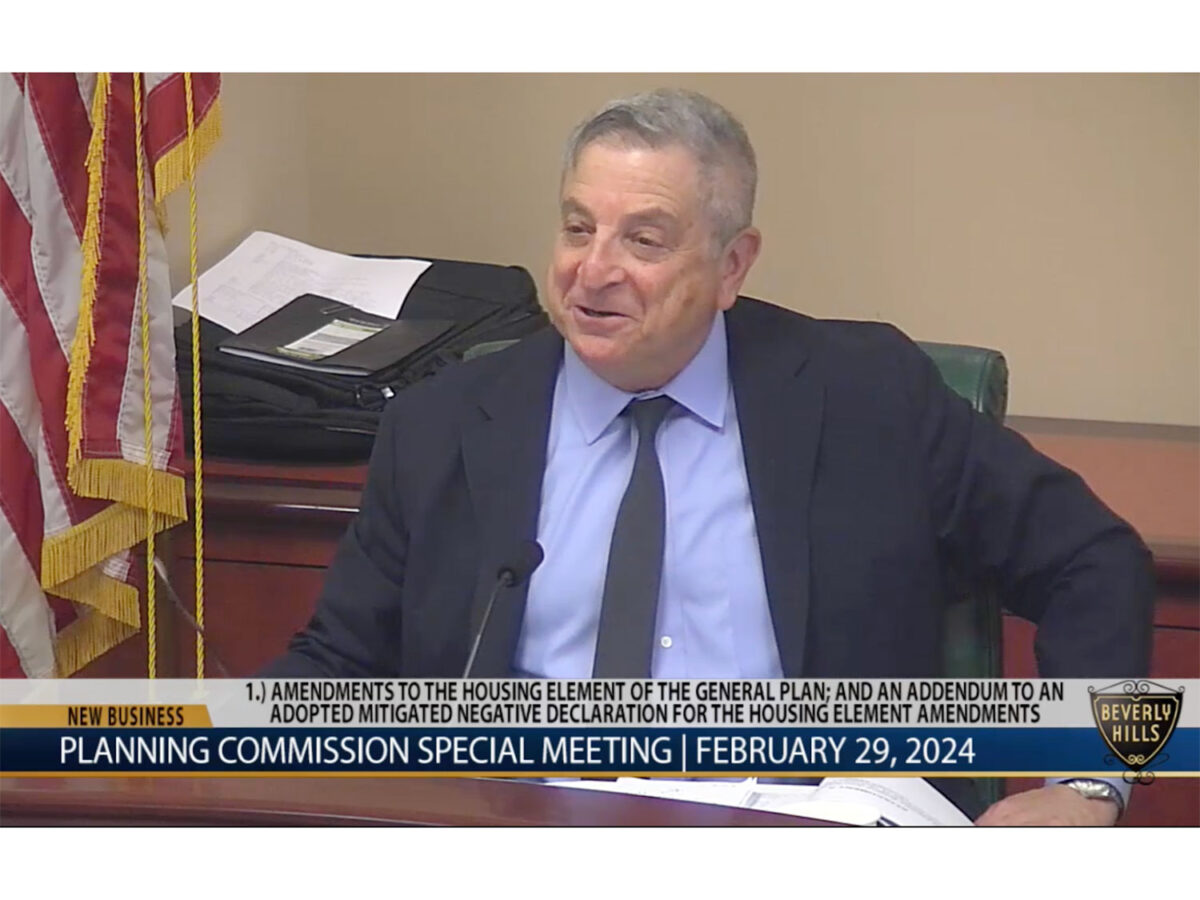The Beverly Hills City Council is set to rule on developer’s appeal to a rejected Builder’s Remedy project application at 129 Linden Drive on March 11. Builder’s Remedy allows developments with a certain number of affordable units to bypass local zoning in cities that fail to meet Sacramento’s ambitious housing demands.
The Linden Drive project—with its 19 stories, 132 market-rate units, 33 affordable units and 73 hotel rooms—far exceeds the city’s zoning limits. At issue in the appeal is whether Beverly Hills is in compliance with the state’s housing goals.
The city believes that it is in compliance, and therefore, not subject to the builder’s remedy. Planning staff ruled on Oct. 13 that the Linden Drive project application was incomplete, in that it did not include applications for exemptions to the city’s zoning requirements.
“The proposed project exceeds city building height and story limits, floor area limits, use limitations and other standards for the multifamily zone in which it is proposed,” City Planner Masa Alkire told the Courier. “In order to pursue the project as proposed, the applicant needs to submit the applications that are required to change the city’s zoning rules and general plan.”
Leo Pustilnikov, the developer who submitted the Linden Drive project application, and his legal representation Rand Paster & Nelson, do not believe the applications are required and are appealing the “incomplete” designation.
“We continue to maintain that these assertions are erroneous and reflect the city’s misunderstanding of state law requirements,” said attorney Dave Rand in the appeal petition filed with the city.
The Linden Drive project is among several builder’s remedy project applications Pustilnikov has filed in the city, which contain more than 1,200 units in total. He believes that the city is subject to the builder’s remedy because the state has yet to certify its Housing Element plan.
The Housing Element requires that Beverly Hills demonstrate its ability to create room for 3,104 new units, of which 1,688 must be affordable, by 2029. The California Department of Housing and Community Development (HCD) has rejected four versions of the city’s Housing Element plan over the past three years.
The city submitted an updated version of its Housing Element to HCD on Feb. 14 that contains substantial differences from prior drafts. The state must provide feedback on the submission by March 30.
To make matters more complicated, the city is being sued by the Californians for Homeownership, a nonprofit sponsored by the California Association of Realtors, for its failure to receive Housing Element certification. Last December, a Superior Court Judge ruled in that case that the city had failed in its legal duty to plan for future housing needs.
The ruling suspended Beverly Hills’ ability to issue building permits—except for permits that create new residential bedrooms or units—until the city’s Housing Element plan is deemed substantially compliant with state law.
However, the city immediately filed an appeal to this ruling, which City Attorney Larry Wiener believes prevents the ruling from taking effect.
Californians for Homeownership have a different interpretation of the law.
“Our view is that the ruling is currently in effect and is not stayed during the appeal,” Matt Gelfand, attorney for Californians for Homeownership, told the Courier. “However, we understand that the City will be seeking guidance from the trial court on this issue and we are not moving to enforce the order until that process plays out.”
Rand and Pustilnikov have threatened separate legal action against the city over its refusal to comply with the Housing Element, according to city documents.
The city, for its part, maintains that it is exempt from the builder’s remedy.
“The city’s currently adopted Housing Element is substantially compliant with state law and there is pending litigation regarding this topic,” Alkire told the Courier. “The state law provisions commonly known as builder’s remedy do not apply if a jurisdiction has a housing element substantially compliant with state law.”
Pustilnikov and his legal team, however, don’t believe the city has the authority to make this ruling.
“The positions reflected by the city’s incomplete letters and the applicant’s responses demonstrate fundamental legal disagreement over the scope of the city’s discretion,” states Rand.
City Council members will now be put in the hot seat and asked to weigh in on whether the city should accept the Linden Drive builder’s remedy application. With around a dozen more builder’s remedy projects in the pipeline, their decision could have significant ramifications for the future of Beverly Hills’ skyline and its housing market.







